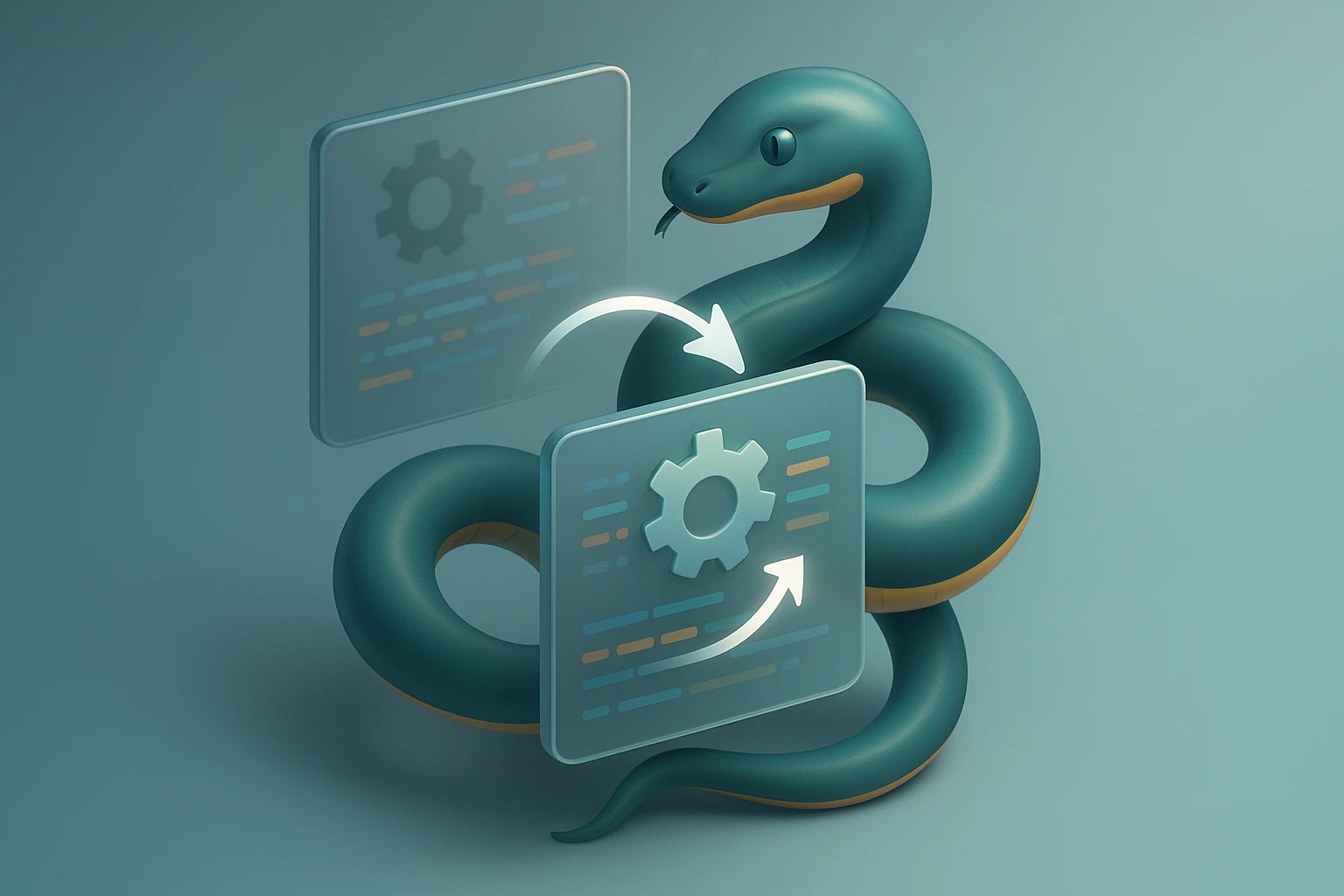How to Iterate Over a Dictionary
Diagram showing ways to iterate over a dictionary: for key in dict, for value in dict.values(), for key,value in dict.items(), enumerate(), dict comprehension and arrow code snippets.

Dictionary Iteration Guide
Working with data structures forms the backbone of modern programming, and understanding how to navigate through them efficiently can dramatically improve your code quality and performance. When you're dealing with key-value pairs, the ability to traverse and manipulate these collections becomes essential for building robust applications. Whether you're processing user data, managing configuration settings, or analyzing large datasets, mastering these techniques will empower you to write cleaner, more maintainable code.
At its core, dictionary iteration refers to the process of systematically accessing each element within a dictionary data structure, examining keys, values, or both simultaneously. This fundamental operation appears in countless programming scenarios, from simple data lookups to complex data transformations. Different programming languages offer various approaches to accomplish this task, each with its own syntax and performance characteristics. Understanding these methods from multiple perspectives—including efficiency, readability, and use-case scenarios—will help you choose the right approach for your specific needs.
Throughout this comprehensive guide, you'll discover practical techniques for traversing dictionaries across popular programming languages, learn about performance considerations that can impact your application's speed, and explore real-world examples that demonstrate best practices. You'll gain insights into common pitfalls to avoid, understand when to use specific iteration methods over others, and develop the confidence to handle complex data manipulation tasks. By the end, you'll have a thorough understanding of dictionary iteration patterns that you can immediately apply to your projects.
Understanding Dictionary Data Structures
Before diving into iteration techniques, it's crucial to understand what dictionaries are and why they're so prevalent in programming. Dictionaries, also known as hash maps, associative arrays, or objects in some languages, store data in key-value pairs. This structure provides extremely fast lookup times, typically O(1) on average, making them ideal for scenarios where you need to quickly retrieve values based on unique identifiers.
The architecture of dictionaries relies on hashing functions that convert keys into array indices, allowing for direct access to values without sequential searching. This underlying mechanism explains why dictionary keys must be immutable in languages like Python—the hash value of a key must remain constant throughout the dictionary's lifetime. When you iterate over a dictionary, you're essentially traversing this internal structure, which may not maintain the insertion order depending on the language version and implementation.
Understanding the internal structure of dictionaries helps you write more efficient iteration code and avoid common performance pitfalls that can slow down your applications.
Different programming languages implement dictionaries with varying characteristics. Python's dictionaries have been ordered by insertion since version 3.7, JavaScript objects maintain a specific property order based on creation and type, while Java's HashMap provides no ordering guarantees. These differences significantly impact how you should approach iteration and what you can expect from the traversal order.
Basic Iteration Techniques in Python
Python offers several elegant ways to iterate over dictionaries, each suited to different scenarios. The most straightforward approach involves using a for loop directly on the dictionary object, which by default iterates over the keys. This method provides a clean, readable syntax that's perfect for simple key-based operations.
user_data = {
'name': 'Alice',
'age': 30,
'email': 'alice@example.com',
'role': 'developer'
}
# Iterating over keys
for key in user_data:
print(f"Key: {key}")
# Explicit key iteration
for key in user_data.keys():
print(f"Key: {key}, Value: {user_data[key]}")
When you need access to values without their corresponding keys, Python's values() method provides a direct path. This approach is particularly useful when you're performing aggregate operations, filtering data, or when the keys themselves don't matter for your current operation. The method returns a view object that dynamically reflects any changes to the dictionary.
# Iterating over values only
for value in user_data.values():
print(f"Value: {value}")
# Practical example: checking if any value is empty
has_empty = any(not value for value in user_data.values())
Working with Key-Value Pairs Simultaneously
The most powerful and commonly used iteration method in Python involves the items() method, which returns key-value pairs as tuples. This approach allows you to work with both elements simultaneously, making it ideal for data transformation, validation, and most real-world scenarios where you need context from both the key and value.
# Iterating over key-value pairs
for key, value in user_data.items():
print(f"{key}: {value}")
# Practical example: creating a formatted string
formatted_data = '\n'.join(f"{k.capitalize()}: {v}" for k, v in user_data.items())
# Filtering and transforming
updated_data = {k: v for k, v in user_data.items() if isinstance(v, str)}
Using the items() method for simultaneous access to keys and values is not just more readable—it's also more efficient than repeatedly accessing the dictionary with keys inside the loop.
Advanced Python Iteration Patterns
Beyond basic iteration, Python provides sophisticated techniques for handling complex dictionary operations. Dictionary comprehensions offer a concise way to create new dictionaries based on existing ones, combining iteration with transformation in a single, readable expression. These comprehensions can include conditional logic, making them incredibly versatile for data processing tasks.
# Dictionary comprehension with transformation
squared_values = {k: v**2 for k, v in {'a': 2, 'b': 3, 'c': 4}.items()}
# Conditional dictionary comprehension
filtered_users = {
name: details for name, details in users.items()
if details.get('active') and details.get('age') > 18
}
# Swapping keys and values
inverted_dict = {v: k for k, v in user_data.items() if isinstance(v, str)}
When dealing with nested dictionaries, recursive iteration becomes necessary. This pattern is particularly common when working with JSON data, configuration files, or hierarchical data structures. Understanding how to traverse nested structures safely, with proper error handling, is essential for robust applications.
def iterate_nested_dict(d, parent_key=''):
"""Recursively iterate through nested dictionaries"""
for key, value in d.items():
current_key = f"{parent_key}.{key}" if parent_key else key
if isinstance(value, dict):
iterate_nested_dict(value, current_key)
else:
print(f"{current_key}: {value}")
nested_config = {
'database': {
'host': 'localhost',
'credentials': {
'username': 'admin',
'password': 'secret'
}
},
'api': {
'timeout': 30,
'retries': 3
}
}
iterate_nested_dict(nested_config)
Enumeration and Index Tracking
Sometimes you need to track the iteration index alongside your dictionary elements. Python's enumerate() function works seamlessly with dictionary iteration methods, providing a counter that can be useful for debugging, logging, or implementing position-dependent logic.
# Enumerating dictionary items
for index, (key, value) in enumerate(user_data.items()):
print(f"Item {index}: {key} = {value}")
# Practical use case: batch processing with progress tracking
def process_large_dict(data_dict, batch_size=100):
for index, (key, value) in enumerate(data_dict.items()):
process_item(key, value)
if (index + 1) % batch_size == 0:
print(f"Processed {index + 1} items...")
JavaScript Object Iteration Methods
JavaScript offers multiple approaches for iterating over objects, each with distinct characteristics and use cases. The traditional for...in loop iterates over all enumerable properties, including inherited ones from the prototype chain. While this method is straightforward, it requires careful consideration when working with objects that have prototype properties.
const userData = {
name: 'Bob',
age: 28,
email: 'bob@example.com',
department: 'engineering'
};
// Traditional for...in loop
for (let key in userData) {
if (userData.hasOwnProperty(key)) {
console.log(`${key}: ${userData[key]}`);
}
}
// Modern approach using Object.keys()
Object.keys(userData).forEach(key => {
console.log(`${key}: ${userData[key]}`);
});
Modern JavaScript introduced several built-in methods that provide cleaner, more functional approaches to object iteration. Object.keys(), Object.values(), and Object.entries() return arrays that you can iterate over using standard array methods like forEach(), map(), or filter(), enabling powerful functional programming patterns.
- 🔑 Object.keys() returns an array of the object's own enumerable property names, perfect for key-based operations
- 💎 Object.values() provides direct access to values, ideal for aggregate calculations or value-based filtering
- 📦 Object.entries() returns key-value pairs as arrays, offering the most flexibility for simultaneous access
- 🎯 for...of with Object.entries() combines modern syntax with destructuring for clean, readable code
- ⚡ Array methods like map and filter can be chained with these methods for powerful transformations
// Using Object.entries() with for...of
for (const [key, value] of Object.entries(userData)) {
console.log(`${key}: ${value}`);
}
// Functional approach with array methods
const formattedData = Object.entries(userData)
.map(([key, value]) => `${key.toUpperCase()}: ${value}`)
.join('\n');
// Filtering and transforming
const stringValues = Object.entries(userData)
.filter(([key, value]) => typeof value === 'string')
.reduce((acc, [key, value]) => ({...acc, [key]: value}), {});
Modern JavaScript iteration methods return arrays, which means you get access to all array methods and can easily chain operations for complex data transformations.
Iteration Performance Considerations
Performance characteristics vary significantly between different iteration methods, and understanding these differences helps you write efficient code. While modern computers handle small to medium-sized dictionaries with ease regardless of the method chosen, performance differences become critical when dealing with large datasets or frequent iterations in tight loops.
| Method | Performance | Memory Usage | Best Use Case |
|---|---|---|---|
for key in dict (Python) |
Fastest | Minimal | Simple key-only operations |
dict.items() (Python) |
Fast | Low | Accessing keys and values together |
dict.keys() / dict.values() |
Fast | Low | Specific key or value operations |
| Dictionary comprehension | Very Fast | Moderate | Creating new dictionaries with transformations |
Object.keys() (JavaScript) |
Fast | Moderate | When you need an array of keys |
Object.entries() (JavaScript) |
Fast | Moderate | Simultaneous key-value access with modern syntax |
for...in (JavaScript) |
Moderate | Minimal | Legacy code or prototype chain access |
Memory efficiency becomes particularly important when working with large dictionaries or in memory-constrained environments. View objects in Python, returned by methods like keys(), values(), and items(), provide memory-efficient iteration because they don't create copies of the data. Instead, they provide dynamic views that reflect the current state of the dictionary.
# Memory-efficient iteration for large dictionaries
large_dict = {i: i**2 for i in range(1000000)}
# This doesn't create a list copy
for key, value in large_dict.items():
if value > 500000:
process_item(key, value)
break # Early termination saves processing time
# Avoid this for large dictionaries - creates a list copy
keys_list = list(large_dict.keys()) # Memory intensive!
Optimization Strategies
Several strategies can significantly improve iteration performance in production environments. Early termination, where you break out of loops as soon as you find what you're looking for, prevents unnecessary processing. Caching frequently accessed dictionary views can reduce overhead in nested loops. Additionally, choosing the right iteration method based on your actual needs—iterating only over keys when values aren't needed, for example—can provide measurable performance improvements.
The fastest iteration method is the one that does the least work—only access what you need, and stop iterating as soon as possible.
# Efficient search with early termination
def find_user_by_email(users_dict, target_email):
for user_id, user_data in users_dict.items():
if user_data.get('email') == target_email:
return user_id, user_data
return None, None
# Caching views for repeated iteration
users_items = users_dict.items() # Cache the view
for _ in range(multiple_iterations):
for user_id, data in users_items:
process_user(user_id, data)
Common Patterns and Real-World Applications
Understanding practical patterns helps you recognize when and how to apply dictionary iteration in real-world scenarios. Data transformation represents one of the most common use cases, where you need to convert dictionary structures from one format to another, perhaps for API responses, database operations, or data export functionality.
# Transforming API response data
def transform_api_response(raw_data):
"""Convert API response to internal data format"""
return {
'id': raw_data.get('userId'),
'full_name': f"{raw_data.get('firstName')} {raw_data.get('lastName')}",
'contact': {
'email': raw_data.get('email'),
'phone': raw_data.get('phoneNumber')
},
'metadata': {
k: v for k, v in raw_data.items()
if k.startswith('meta_')
}
}
# Merging multiple dictionaries with conflict resolution
def merge_configs(*configs):
"""Merge multiple configuration dictionaries"""
merged = {}
for config in configs:
for key, value in config.items():
if key in merged and isinstance(merged[key], dict) and isinstance(value, dict):
merged[key] = merge_configs(merged[key], value)
else:
merged[key] = value
return merged
Validation and data cleaning operations frequently require iterating through dictionaries to check data types, verify required fields, sanitize input, or enforce business rules. These operations are critical for maintaining data integrity and preventing errors downstream in your application.
# Data validation pattern
def validate_user_data(user_data, required_fields):
"""Validate user data against required fields and types"""
errors = {}
# Check required fields
for field in required_fields:
if field not in user_data:
errors[field] = "Required field missing"
# Validate data types and constraints
validations = {
'email': lambda v: '@' in str(v),
'age': lambda v: isinstance(v, int) and 0 < v < 150,
'username': lambda v: isinstance(v, str) and len(v) >= 3
}
for field, validator in validations.items():
if field in user_data and not validator(user_data[field]):
errors[field] = f"Invalid {field} format"
return len(errors) == 0, errors
# Sanitizing input data
def sanitize_dict(data, allowed_keys):
"""Remove unwanted keys and sanitize values"""
return {
k: str(v).strip() if isinstance(v, str) else v
for k, v in data.items()
if k in allowed_keys
}
Aggregation and Statistical Operations
Dictionary iteration powers many aggregation operations, from simple counting to complex statistical calculations. These patterns appear frequently in data analysis, reporting systems, and monitoring applications where you need to extract insights from collected data.
# Statistical aggregation patterns
def calculate_statistics(data_dict):
"""Calculate various statistics from numeric dictionary values"""
values = [v for v in data_dict.values() if isinstance(v, (int, float))]
if not values:
return None
return {
'count': len(values),
'sum': sum(values),
'average': sum(values) / len(values),
'min': min(values),
'max': max(values)
}
# Grouping and categorization
def group_by_category(items_dict, category_key):
"""Group dictionary items by a specific category"""
groups = {}
for item_id, item_data in items_dict.items():
category = item_data.get(category_key, 'uncategorized')
if category not in groups:
groups[category] = []
groups[category].append({
'id': item_id,
**item_data
})
return groups
Real-world applications rarely use iteration in isolation—combining iteration with filtering, transformation, and aggregation creates powerful data processing pipelines.
Error Handling and Safe Iteration
Robust dictionary iteration requires careful error handling to prevent runtime exceptions and unexpected behavior. Dictionaries can change size during iteration in some scenarios, keys might not exist when you expect them to, and values might not match expected types. Implementing defensive programming practices ensures your code handles these situations gracefully.
# Safe dictionary access patterns
def safe_process_dict(data_dict):
"""Process dictionary with comprehensive error handling"""
try:
# Create a copy if modification during iteration is possible
items_to_process = list(data_dict.items())
for key, value in items_to_process:
try:
# Safe value access with type checking
if not isinstance(value, dict):
continue
# Process nested data safely
nested_value = value.get('nested_key')
if nested_value is not None:
process_value(nested_value)
except KeyError as e:
logging.warning(f"Missing key during processing: {e}")
continue
except TypeError as e:
logging.error(f"Type error processing {key}: {e}")
continue
except Exception as e:
logging.error(f"Unexpected error during iteration: {e}")
raise
# Handling concurrent modifications
def modify_dict_safely(data_dict, modifications):
"""Apply modifications without affecting iteration"""
keys_to_update = []
keys_to_delete = []
# First pass: identify changes
for key, value in data_dict.items():
if should_update(value):
keys_to_update.append(key)
elif should_delete(value):
keys_to_delete.append(key)
# Second pass: apply changes
for key in keys_to_update:
data_dict[key] = modifications.get(key)
for key in keys_to_delete:
del data_dict[key]
Default Values and Missing Keys
Handling missing keys elegantly is essential for writing robust code. Python's get() method and JavaScript's optional chaining provide safe ways to access potentially missing keys without raising exceptions. Understanding these patterns helps you write cleaner code with less boilerplate error checking.
# Python: Safe access patterns
def extract_user_info(user_dict):
"""Extract user information with safe defaults"""
return {
'username': user_dict.get('username', 'anonymous'),
'email': user_dict.get('email', ''),
'age': user_dict.get('age', 0),
'preferences': user_dict.get('preferences', {})
}
# Using defaultdict for automatic default values
from collections import defaultdict
def count_categories(items):
"""Count items by category with automatic initialization"""
category_counts = defaultdict(int)
for item_id, item_data in items.items():
category = item_data.get('category', 'other')
category_counts[category] += 1
return dict(category_counts)
Language-Specific Iteration Techniques
Different programming languages offer unique approaches to dictionary iteration, each reflecting the language's philosophy and design principles. Understanding these language-specific features enables you to write idiomatic code that leverages the full power of your chosen language.
| Language | Primary Method | Unique Features | Considerations |
|---|---|---|---|
| Python | for k, v in dict.items() |
Dictionary comprehensions, view objects, ordered dicts (3.7+) | Views are dynamic, comprehensions are faster than loops |
| JavaScript | Object.entries() |
Array method chaining, destructuring, Map objects | Objects vs Maps have different iteration guarantees |
| Java | entrySet().forEach() |
Stream API, lambda expressions, concurrent collections | Thread safety with ConcurrentHashMap |
| Ruby | hash.each |
Blocks, symbol keys, enumerable methods | Symbols vs strings as keys affect performance |
| Go | for k, v := range map |
Concurrent-safe maps, random iteration order | Iteration order is intentionally randomized |
| C# | foreach (var kvp in dict) |
LINQ queries, KeyValuePair struct | Concurrent collections for thread-safe iteration |
Java Dictionary Iteration
Java provides multiple ways to iterate over Maps, with modern versions offering functional programming approaches through the Stream API. The traditional entrySet() method remains efficient and widely used, while newer functional approaches provide more expressive code for complex operations.
// Traditional Java iteration
Map<String, Integer> scores = new HashMap<>();
scores.put("Alice", 95);
scores.put("Bob", 87);
scores.put("Charlie", 92);
// Using entrySet with for-each loop
for (Map.Entry<String, Integer> entry : scores.entrySet()) {
System.out.println(entry.getKey() + ": " + entry.getValue());
}
// Modern functional approach with Stream API
scores.entrySet().stream()
.filter(entry -> entry.getValue() > 90)
.forEach(entry ->
System.out.println(entry.getKey() + " scored above 90")
);
// Lambda with forEach (Java 8+)
scores.forEach((name, score) ->
System.out.println(name + ": " + score)
);
Modern language features like streams and lambda expressions don't just make code shorter—they enable declarative programming that's often easier to understand and maintain than imperative loops.
Concurrent and Thread-Safe Iteration
When multiple threads access and modify dictionaries simultaneously, special considerations become necessary to prevent race conditions and data corruption. Different languages provide various mechanisms for thread-safe dictionary operations, from built-in concurrent collections to locking mechanisms that you must implement yourself.
# Python: Thread-safe iteration with locks
from threading import Lock
from collections import defaultdict
class ThreadSafeDict:
def __init__(self):
self._dict = {}
self._lock = Lock()
def safe_iterate(self, callback):
"""Iterate with lock protection"""
with self._lock:
# Create a snapshot to iterate over
items_snapshot = list(self._dict.items())
# Iterate over snapshot without holding lock
for key, value in items_snapshot:
callback(key, value)
def update_item(self, key, value):
"""Thread-safe update"""
with self._lock:
self._dict[key] = value
# JavaScript: Avoiding concurrent modification issues
class SafeMap {
constructor() {
this.map = new Map();
this.modificationQueue = [];
}
safeIterate(callback) {
// Process any queued modifications first
this.processModifications();
// Iterate over current state
for (const [key, value] of this.map.entries()) {
callback(key, value);
}
}
queueUpdate(key, value) {
this.modificationQueue.push({ type: 'update', key, value });
}
processModifications() {
while (this.modificationQueue.length > 0) {
const mod = this.modificationQueue.shift();
if (mod.type === 'update') {
this.map.set(mod.key, mod.value);
}
}
}
}
Performance Benchmarking and Optimization
Measuring actual performance in your specific use case provides concrete data for optimization decisions. Different iteration methods can show surprising performance characteristics depending on dictionary size, value types, and the operations performed during iteration. Benchmarking your specific scenario is more valuable than relying on general performance advice.
# Python: Benchmarking different iteration methods
import time
from functools import wraps
def benchmark(func):
"""Decorator to measure execution time"""
@wraps(func)
def wrapper(*args, **kwargs):
start = time.perf_counter()
result = func(*args, **kwargs)
end = time.perf_counter()
print(f"{func.__name__}: {end - start:.6f} seconds")
return result
return wrapper
# Create test data
large_dict = {f"key_{i}": i for i in range(100000)}
@benchmark
def iterate_items():
total = sum(v for k, v in large_dict.items())
return total
@benchmark
def iterate_values():
total = sum(large_dict.values())
return total
@benchmark
def iterate_keys():
total = sum(large_dict[k] for k in large_dict)
return total
@benchmark
def comprehension_method():
total = sum([v for v in large_dict.values()])
return total
# Run benchmarks
iterate_items()
iterate_values()
iterate_keys()
comprehension_method()
Memory Profiling
Memory usage can be just as important as execution speed, especially for applications handling large datasets or running in resource-constrained environments. Understanding memory patterns helps you choose iteration methods that balance speed and memory efficiency for your specific requirements.
# Python: Memory-efficient iteration patterns
import sys
def get_size(obj):
"""Calculate approximate memory size of object"""
return sys.getsizeof(obj)
# Memory comparison
large_dict = {i: i**2 for i in range(10000)}
# This creates a list in memory
keys_list = list(large_dict.keys())
print(f"List size: {get_size(keys_list)} bytes")
# This returns a view object (much smaller)
keys_view = large_dict.keys()
print(f"View size: {get_size(keys_view)} bytes")
# Generator expression for minimal memory
keys_gen = (k for k in large_dict.keys())
print(f"Generator size: {get_size(keys_gen)} bytes")
Premature optimization is the root of all evil, but understanding your options allows you to make informed decisions when performance actually matters.
Modern Alternatives and Best Practices
Contemporary programming emphasizes readability, maintainability, and expressiveness alongside performance. Modern language features often provide cleaner syntax without sacrificing efficiency, and understanding these options helps you write code that's both performant and pleasant to work with.
- Use comprehensions and functional methods when they improve readability without significant performance penalties
- Prefer explicit iteration methods like
items()over implicit patterns that might confuse readers - Choose descriptive variable names in iteration loops to make the code's purpose immediately clear
- Consider immutability when possible—avoiding modifications during iteration prevents entire categories of bugs
- Document complex iteration logic with comments explaining why specific approaches were chosen
- Use type hints and annotations in languages that support them to make iteration expectations explicit
- Test edge cases including empty dictionaries, single-item dictionaries, and dictionaries with None values
# Python: Modern best practices example
from typing import Dict, Any, Optional
def process_user_records(
users: Dict[str, Dict[str, Any]],
min_age: Optional[int] = None
) -> Dict[str, str]:
"""
Process user records and extract email addresses.
Args:
users: Dictionary mapping user IDs to user data dictionaries
min_age: Optional minimum age filter
Returns:
Dictionary mapping user IDs to email addresses
"""
return {
user_id: user_data['email']
for user_id, user_data in users.items()
if 'email' in user_data
and (min_age is None or user_data.get('age', 0) >= min_age)
}
# JavaScript: Modern best practices example
/**
* Process user records and extract email addresses
* @param {Object} users - User records object
* @param {number} minAge - Optional minimum age filter
* @returns {Object} Object mapping user IDs to emails
*/
function processUserRecords(users, minAge = null) {
return Object.entries(users)
.filter(([userId, userData]) =>
userData.email &&
(minAge === null || userData.age >= minAge)
)
.reduce((acc, [userId, userData]) => ({
...acc,
[userId]: userData.email
}), {});
}
Frequently Asked Questions
What's the fastest way to iterate over a dictionary in Python?
For most practical purposes, using dict.items() provides the best balance of speed and functionality when you need both keys and values. If you only need keys, iterating directly over the dictionary (for key in dict) is marginally faster. However, the performance difference is negligible for dictionaries under 10,000 items. Focus on readability first, and only optimize if profiling reveals iteration as a bottleneck.
Can I modify a dictionary while iterating over it?
Modifying a dictionary during iteration is generally unsafe and can raise runtime errors or cause unexpected behavior. In Python 3, changing the dictionary size during iteration raises a RuntimeError. The safe approach is to collect keys or items you want to modify in a separate list first, then apply modifications after iteration completes. Alternatively, iterate over a copy of the dictionary's items using list(dict.items()).
What's the difference between Object.keys() and Object.entries() in JavaScript?
Object.keys() returns an array containing only the property names (keys) of an object, while Object.entries() returns an array of [key, value] pairs. Use Object.keys() when you only need to work with keys and will access values separately. Use Object.entries() when you need both keys and values together, as it avoids additional property lookups and provides cleaner destructuring syntax.
How do I iterate over nested dictionaries efficiently?
Recursive functions provide the most flexible approach for nested dictionaries. Create a function that checks if each value is itself a dictionary, and if so, recursively calls itself. For better control, consider using a stack-based iterative approach or generator functions that yield paths and values. Always include maximum depth limits to prevent infinite recursion on circular references, and use isinstance(value, dict) to reliably detect nested dictionaries.
Are there performance differences between iteration methods in modern JavaScript?
Modern JavaScript engines optimize all standard iteration methods very efficiently. Object.entries() with for...of performs comparably to traditional for...in loops in most scenarios. The forEach method on the resulting array adds minimal overhead. Choose based on readability and functional requirements rather than micro-optimizations. If performance is critical, measure your specific use case with realistic data sizes, as engine optimizations can vary.
How do I handle dictionary iteration in multi-threaded environments?
Thread-safe iteration requires either using concurrent dictionary implementations (like Python's threading.Lock with standard dicts, Java's ConcurrentHashMap, or C#'s ConcurrentDictionary) or creating snapshots before iteration. The snapshot approach involves copying the dictionary's items to a list while holding a lock, then iterating over the snapshot without the lock. This prevents blocking other threads during iteration but uses more memory. Choose based on your read-to-write ratio and performance requirements.
Should I use dictionary comprehensions or traditional loops?
Dictionary comprehensions are generally faster and more readable for transformations and filtering operations. They're optimized at the interpreter level and clearly express intent. Use traditional loops when you need complex logic, multiple statements per iteration, or early termination based on conditions. Comprehensions work best for pure transformations where each input item maps to one output item. For side effects or complex control flow, explicit loops provide better clarity.
What happens to iteration order in different Python versions?
Python 3.7+ guarantees that dictionaries maintain insertion order as part of the language specification. Python 3.6 had ordered dictionaries as an implementation detail but not a guarantee. Python 3.5 and earlier had no ordering guarantees—iteration order was essentially random and could change between runs. If you need to support older Python versions or want explicit ordering semantics, use collections.OrderedDict. For new code targeting Python 3.7+, standard dictionaries provide reliable ordering.
How can I iterate over a dictionary in reverse order?
In Python 3.8+, use reversed(dict.items()) to iterate in reverse insertion order. For older versions, convert to a list first: list(reversed(list(dict.items()))). In JavaScript, reverse the array returned by Object.entries(): Object.entries(obj).reverse(). Note that reverse iteration only makes sense for ordered dictionaries. If you frequently need reverse iteration, consider whether a different data structure might better suit your needs.
What's the best way to iterate over very large dictionaries?
For very large dictionaries, use view objects or iterators rather than creating lists of keys or items, as this avoids memory overhead. Process items in batches if possible, allowing for progress tracking and potential early termination. Consider using generators for transformations to avoid creating intermediate data structures. If the dictionary doesn't fit in memory, explore database solutions or memory-mapped files. Profile your specific use case to identify actual bottlenecks before optimizing.
Sponsor message — This article is made possible by Dargslan.com, a publisher of practical, no-fluff IT & developer workbooks.
Why Dargslan.com?
If you prefer doing over endless theory, Dargslan’s titles are built for you. Every workbook focuses on skills you can apply the same day—server hardening, Linux one-liners, PowerShell for admins, Python automation, cloud basics, and more.




